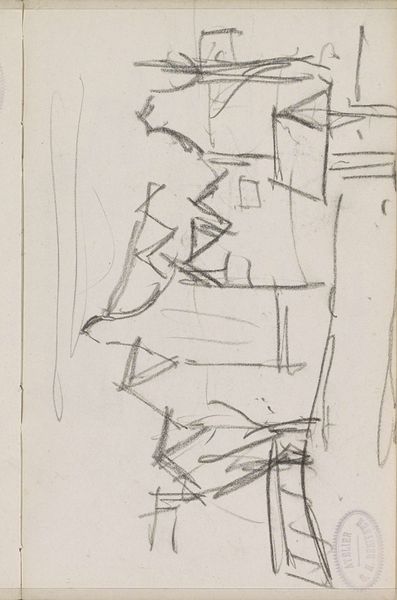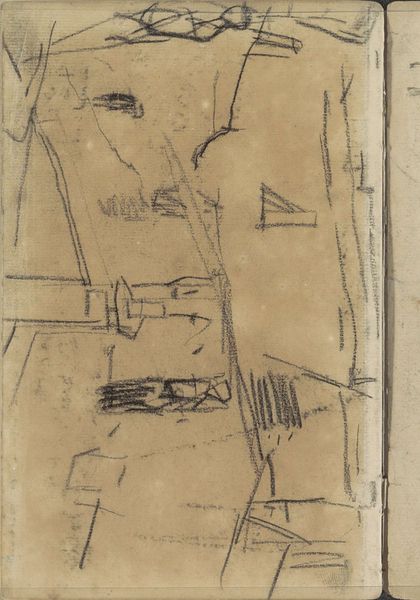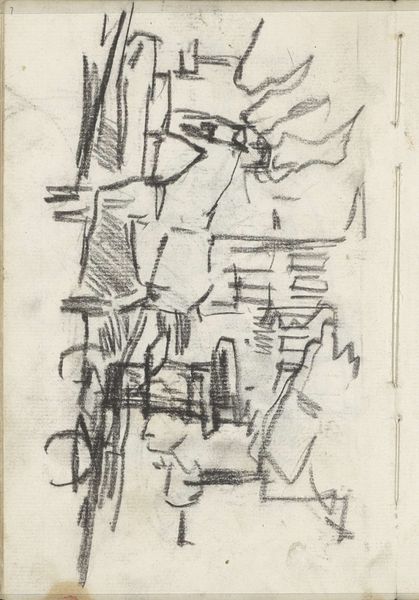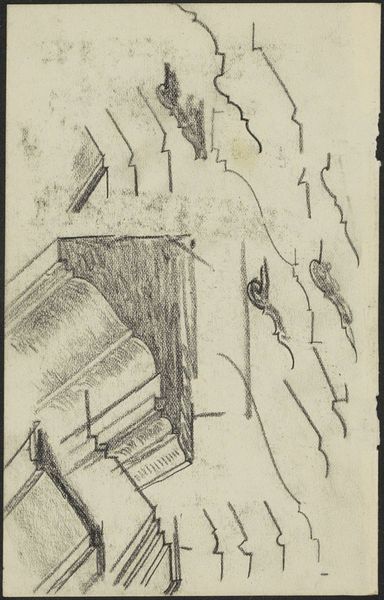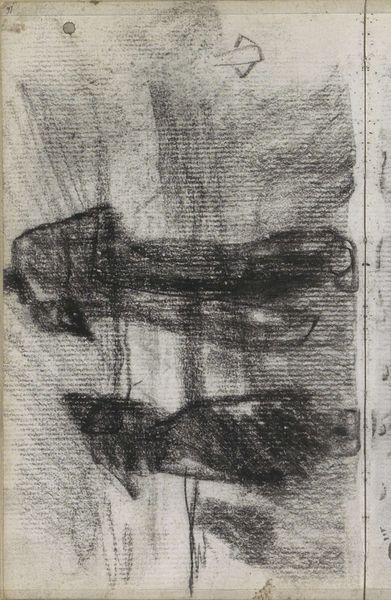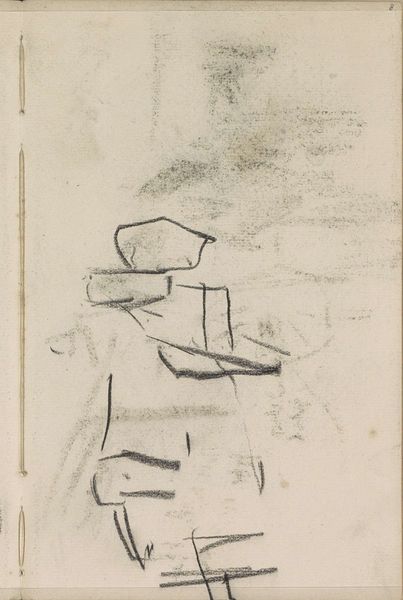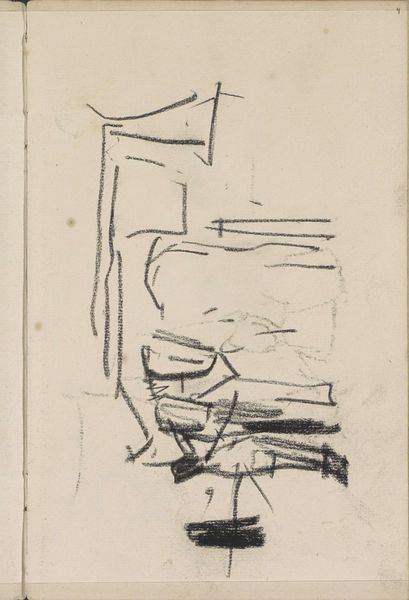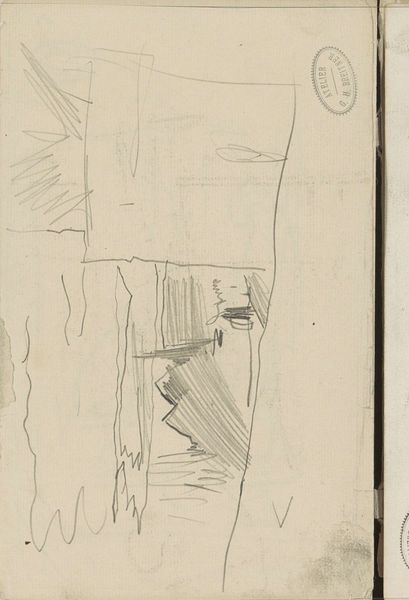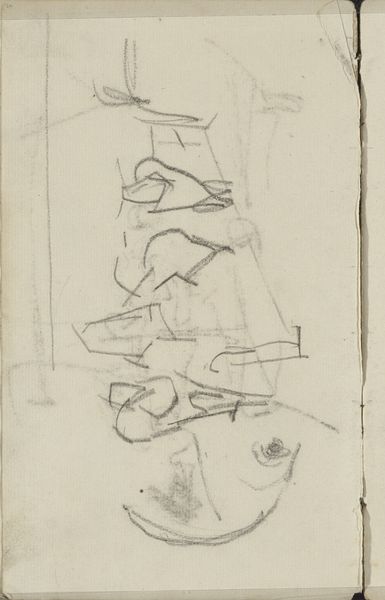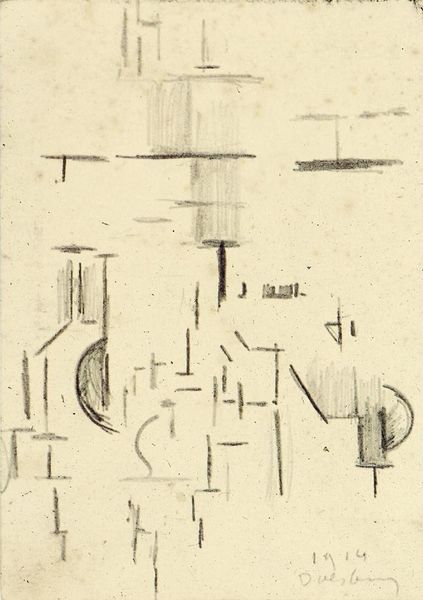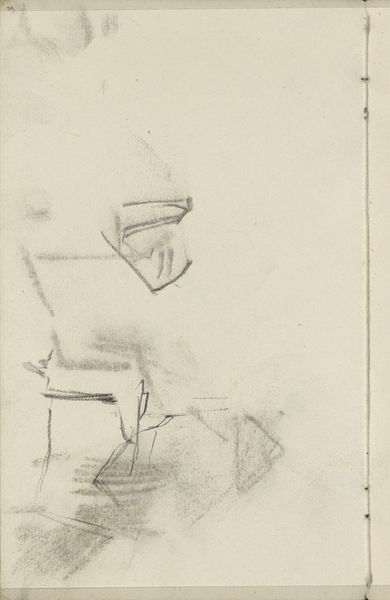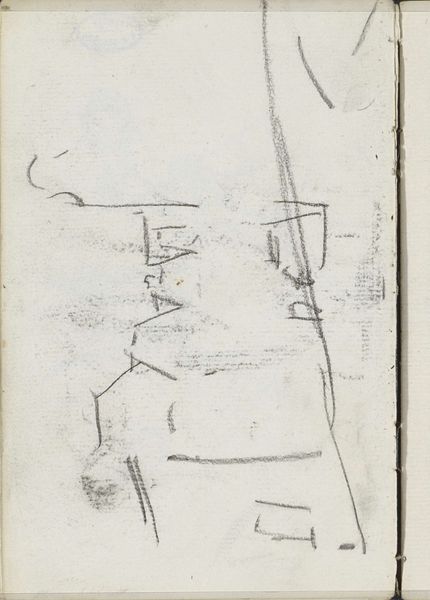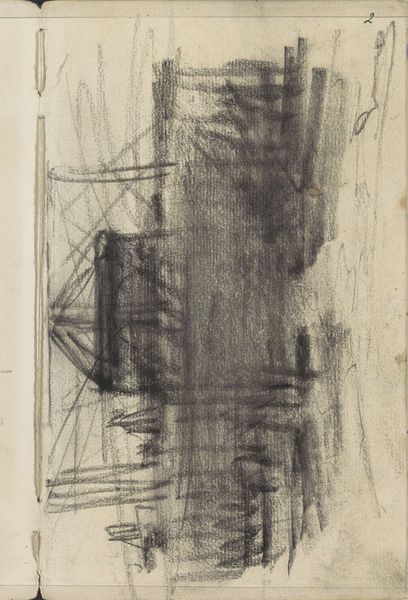
drawing, paper, pencil
#
drawing
#
impressionism
#
landscape
#
paper
#
pencil
Copyright: Rijks Museum: Open Domain
Curator: Here in Gallery 22 we have “Woman before a Gate,” a pencil drawing on paper by George Hendrik Breitner, dating from around 1882. Editor: It feels unfinished, somehow, a quick impression jotted down rather than a completed piece. The stark contrast between the heavy shading on the right and the sparse lines on the left creates an unsettling imbalance. Curator: Indeed, the drawing is notable for its raw, immediate quality. Breitner was deeply influenced by the social realism of the time, and that permeates the way he captured everyday life in Amsterdam. Editor: The compositional strategy creates this tension. Notice how the sharp diagonal hatching defines the form, and look closely at the gate, almost floating—the technique makes the piece feel spontaneous. What might a more representational approach reveal? Curator: In Breitner's oeuvre, which engaged with photographic practices, such spontaneous representations reflected urban anxieties regarding modernism. He chose deliberately everyday settings to offer social critique, a point of view accessible to wider audiences than portraits of the elite. This work is housed here at the Rijksmuseum, because this and other drawings provide insightful social documentation about Amsterdam at that time. Editor: And what of the figure? Barely defined, almost swallowed by the looming gate. Is it anonymity or perhaps indifference? I find myself longing for more information, both narratively and structurally, to pull all of these disparate elements together. Curator: The rapid, sketch-like style actually underscores the ephemerality of modern life and the individual’s fleeting presence within the expanding metropolis. His technique and the image reinforce one another beautifully, each accentuating his thematic aims. Editor: Looking again, I see how the restricted use of tonal values heightens this feeling of urban solitude. There's a quiet strength in the stark, graphic language he employs, wouldn't you say? Curator: Precisely! The economy of means amplifies its expressive power. A fitting way, I think, to represent the silent struggles of urban life. Editor: Absolutely, it pushes us to contemplate these hidden moments—glimpses into another's reality rendered so strikingly. Curator: Hopefully, viewers take away from the image more than an evocative image, but an enduring social narrative, and perhaps be pushed to look more closely at such social factors as revealed through the artist's choices.
Comments
No comments
Be the first to comment and join the conversation on the ultimate creative platform.
